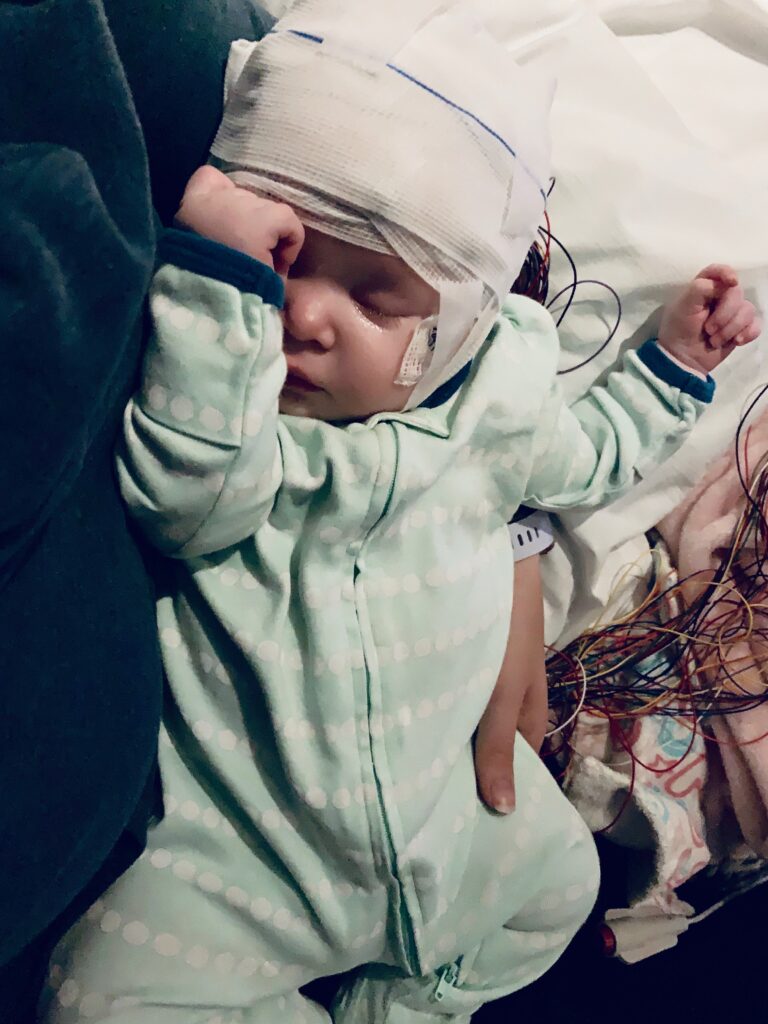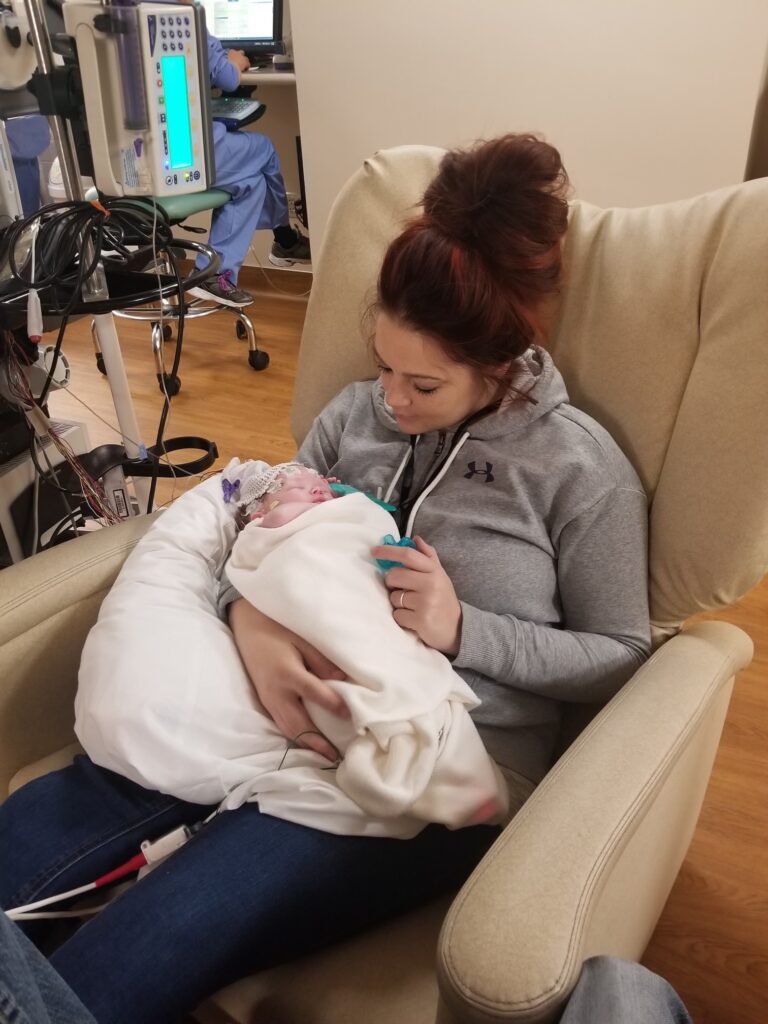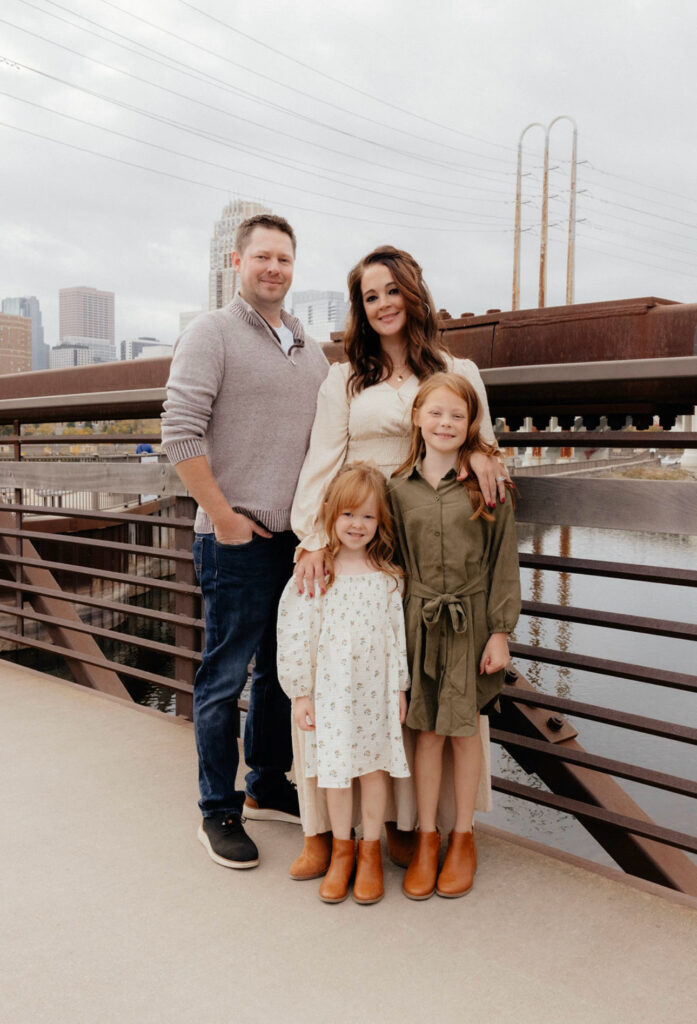

My pregnancy with Ava was uneventful, a pleasant experience that led to her planned cesarean delivery at 37 weeks. Ava entered the world weighing 7 pounds and measuring 20.5 inches, letting out a loud cry as she took her first breath. However, the joy of her arrival quickly turned to concern when, just minutes later, her color began to fade, and her oxygen levels plummeted into the 50s. A rush of fear gripped us as the medical team sprang into action, administering oxygen that thankfully resolved the crisis almost immediately.
During our three-day hospital stay, we noticed that Ava was unusually sleepy and had difficulty feeding. As parents, we trusted the reassurance of her pediatrician that all babies are different, but my instincts told me something was off. We often had to wake her for feedings using a damp cloth, and even then, she would drift back to sleep almost immediately, making it a struggle to ensure she was getting enough nourishment.
By the end of the first week at home, our worries deepened. Ava’s lethargy became more pronounced, and we noticed a deviation in her gaze, accompanied by stiffening in her right arm. Initially, I chalked it up to typical newborn behaviors, but deep down, I sensed that this was something more serious. My background in working with seizures within the autism community made me acutely aware of the signs. We rushed to Masonic Children’s Hospital in Minneapolis, where the next few weeks would forever change our lives.


Upon our arrival in the emergency room, the medical team witnessed the troubling signs we had observed. Ava was stabilized with phenobarbital, and a flurry of tests began. A head CT came back normal for her age, but as the days passed, the weight of fear pressed heavily on our hearts. Ava did not open her eyes for nearly four days, and she lost a significant amount of weight, requiring the placement of an NG tube to ensure she was getting the nutrients she desperately needed.
On day eight, we received an MRI that showed slightly delayed myelination for her age but otherwise appeared normal. However, the relief was short-lived as her EEG monitoring revealed 20 subclinical seizures within just a two-hour span. The doctors adjusted her medications, desperate to find a solution, but it felt like each day only brought more uncertainty.
After more tests and adjustments, Ava was stabilized and discharged on Keppra. Yet, we remember meeting with the medical team, overwhelmed with concern that we were leaving without a definitive diagnosis. The fear of the unknown was paralyzing, and we were consumed with questions and “what ifs.”
Just days later, our neurologist called late one evening with results from Ava’s lumbar puncture and genetic testing. My heart sank as I braced for bad news. But then she said Ava had a treatable condition called Pyridoxine Dependent Epilepsy. With “treatable,” we could finally breathe again. We had a diagnosis; we knew what was wrong with our baby girl.
In the weeks that followed, we navigated countless appointments, labs, and genetic testing for my husband and me to confirm her diagnosis. I remember her metabolic doctor stating that there were only around 300 reported cases worldwide at that time. It was daunting to hear that we would likely know more about Ava’s disorder than many of those who would treat her. I recall the neurologist telling us that Ava was her first case of Pyridoxine Dependent Epilepsy.

With the addition of Pyridoxine, Ava was weaned off the Keppra and maintained excellent seizure control. However, shortly after she turned six months old, we noticed another seizure. Her eyes deviated again, and we called for emergency help. The doctors determined that she had outgrown her current dose of Pyridoxine, which was promptly increased.
A few months later, Ava became ill, and we were unable to manage her fever at home. We took her to the emergency department, where she suffered a tonic-clonic seizure while being treated. I held her in my arms as her oxygen dropped, and she turned blue. A flood of doctors rushed in, intubating her, and placing her on propofol. Once stable, Ava was moved to the PICU, where she was heavily monitored. The team suspected meningitis and started her on heavy antibiotics. A few days later, we learned that she had the Adenovirus, which wreaked havoc on her tiny body.
After eight long days in the hospital, we were finally discharged, but we pleaded with the doctors for an emergency medication to help with her seizures, as her current one did not provide resolution. The fear of another seizure haunted us, and we invested in a SAMI camera to help monitor her while we slept. I hadn’t slept in weeks, constantly checking on her in fear of missing a medical emergency.


Ava’s health challenges continued, and shortly after her first birthday, she fell ill again. We took her back to Masonic, where she had another seizure due to a fever spike. This time, she didn’t require intubation but ended up in the ICU due to the significant medications given and concerns of respiratory distress. Once again, her blood sugar had dropped to dangerously low levels just like her previous hospital stay. We now had a pattern of hyperglycemia when she was ill, leading to another team of doctors and more tests.
Over the next few years, we spent countless days in the hospital, always fearful of her health. We continued to advocate for Ava, ensuring she received the best care possible. After a change in her metabolic team, we transferred her care to a new doctor who recommended Triple Therapy. This involved a low-protein diet and arginine supplementation along with her Pyridoxine treatment. Since then, Ava has been seizure-free for over four years.
Unrelated to her PDE diagnosis Ava has had two surgeries. Her first surgery was removal of ear tags on both ears. Ava also underwent strabismus surgery on both of her eyes.



In addition to her medical journey, Ava has also received various support. She started the Birth to 3 programs when she was just under three months old and was successfully discharged by the age of two, having met her developmental milestones. She began physical therapy after her initial hospital stay and graduated from that program at age three. Speech therapy started around age two and continued until she was five, and she was discharged just before starting kindergarten in the fall of 2024.
Now, as Ava approaches her sixth birthday in December, she is truly thriving. She has undergone neuropsychological evaluations at ages one, three, and five, all of which showed no concerns. Ava has participated in gymnastics, horseback riding, basketball, track and swimming. She has a love for school, building, animals, and the outdoors. Watching her grow and flourish fills our hearts with pride.
While our journey has had many challenges, it has also been filled with love, resilience, and hope. We are eternally grateful for the medical teams that have supported us and the foundation dedicated to research and finding a cure for disorders like Ava’s. Her story is one of overcoming adversity, reminding us that even in the face of uncertainty, there is always a reason to hope. Ava’s journey is just beginning, and we can’t wait to see where it takes her next.
 Donate
Donate